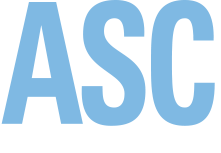In 2021, Sea Grant and the Water Resources Institute teamed up with the Wisconsin State Laboratory of Hygiene to host a virtual meeting of more than 50 state agency personnel and academics from the University of Wisconsin System. The main goal of the workshop was to identify knowledge gaps and energize opportunities for collaboration to move forward with a Wisconsin per- and polyfluoroalkyl substances (PFAS) research agenda. PFAS, man-made chemicals, are found in many products and used for a variety of purposes. PFAS can last in the environment for long periods of time and can pose health risks to people.
Amy Schultz, environment researcher for the University of Wisconsin-Madison-based Survey of the Health of Wisconsin, summed it up for most participants when she said points of collaboration “span all the worlds. And, collaboration is necessary.”
All the worlds she referred to were the four areas around which the workshop had been formatted:
Environmental contamination by PFAS. PFAS have been found in surface and groundwater, rain, air, soil, fish and wildlife.
How PFAS move and persist in the environment. There are 80 known sites of contamination in the state, but there are almost certainly more.
How PFAS should be dealt with once discovered. There was uniform agreement among workshop attendees that there needs to be a way to sequester PFAS, but how? PFAS can also be removed from water and disposed of under proper conditions, but this can be expensive and may not be a long-term solution.
The effects of PFAS on people. Studies have shown PFAS can increase cholesterol levels, decrease the efficacy of vaccines and — for pregnant women — cross the placenta. PFAS have been linked to cancer, osteoarthritis, ulcerative colitis and thyroid disease.
Gavin Dehnert, Sea Grant’s emerging contaminants scientist, organized the meeting and wrote a report based on the presentations and discussion. Find the report at go.wisc.edu/5w3989. Contact Dehnert at dehnert2@wisc.edu for further information. — MH



